
The Weiss Helios is the company’s flagship DAC, which is more than a DAC as it also includes UPnP/Roon capable streaming, a host of DSP options, a headphone amp, and volume control for use as a preamp.

I’ve reviewed the Weiss DAC501 (review) and the Weiss DAC204 (review) and both sit very comfortably on my list of Favorites.
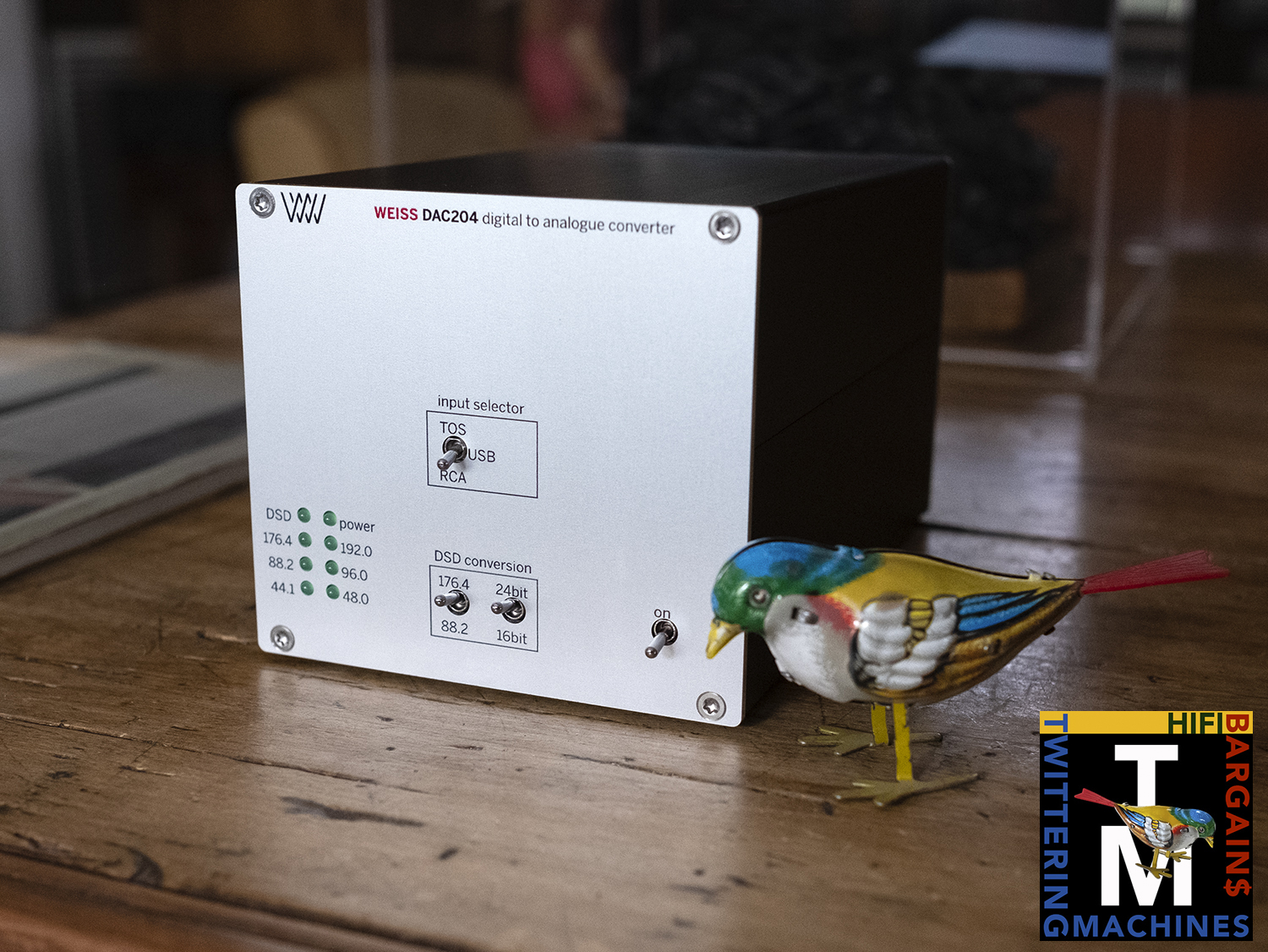
The DAC204 also sits on my list of genuine HiFi Bargains and I admit I still covet that little box-o-DAC goodness for my desktop…
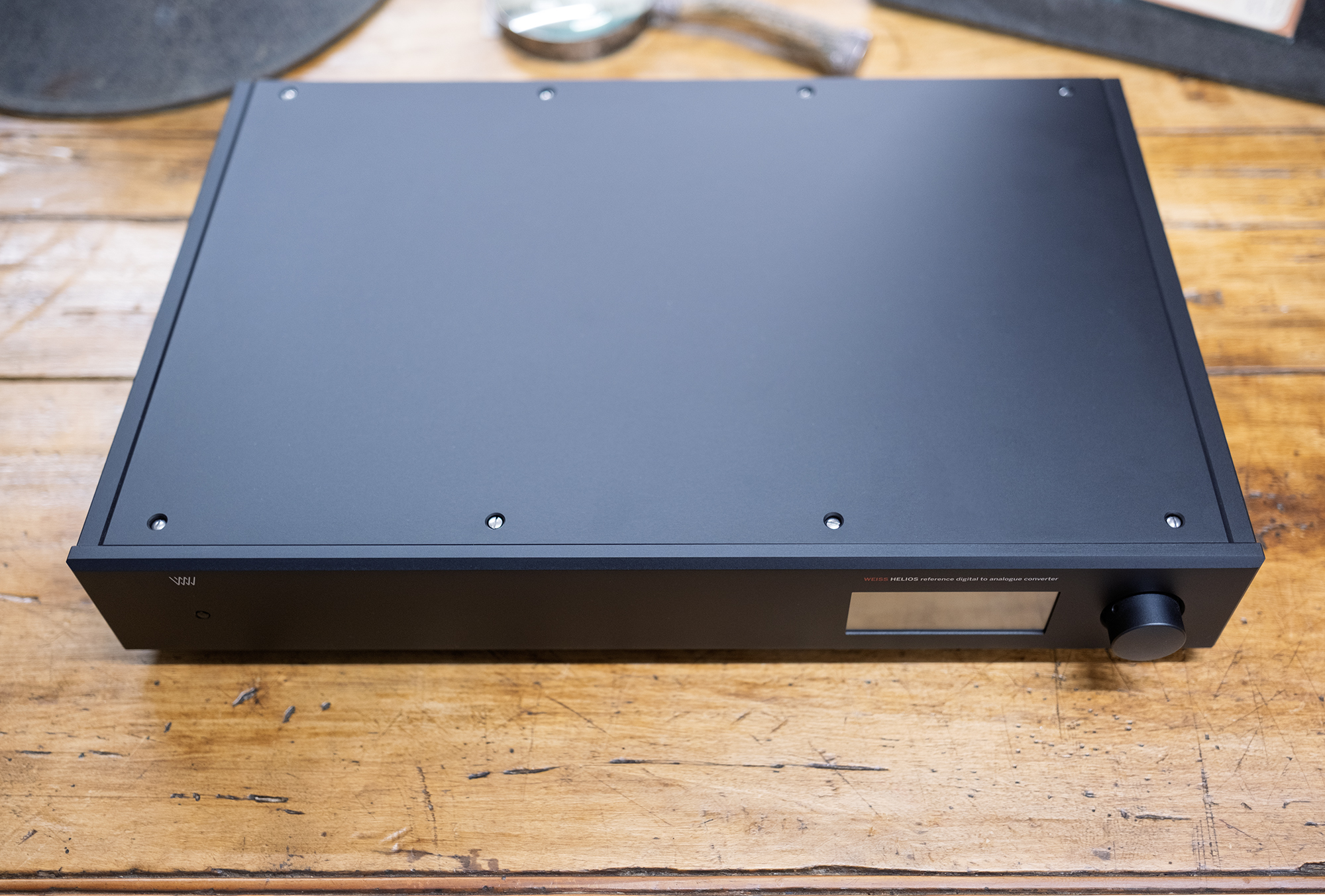
The Helios sits at top of the line of Weiss DACs and it differs from the DAC501 and the full-width DAC502 in its use of the ESS 9038 Pro 8-channel chip with four paralleled conversion channels per audio channel and an output stage that relies on Weiss’s own OP2-BP discrete op-amps. Of course we get the full coarse of Weiss DSP-based options including a 3-band EQ, Room EQ, Headphone EQ, Crosstalk Cancellation, De-Essing and more.
From Weiss:
What’s most significant, however, is the unit’s analog stage, whose new discrete operational amplifiers are of the utmost importance. These “discrete operational amplifiers” are called OP2-BP, and are designed and produced by Weiss. Their performance far exceeds commonly-available monolithic op-amp chips, and contribute to Helios’ extraordinary sound quality and unmatched signal to noise ratio of 128 dB. Helios not only performs well on the test-bench, with s/n of 128 dB, but is also eminently listenable, taking the signature Weiss detail and transparency to a whole new level.
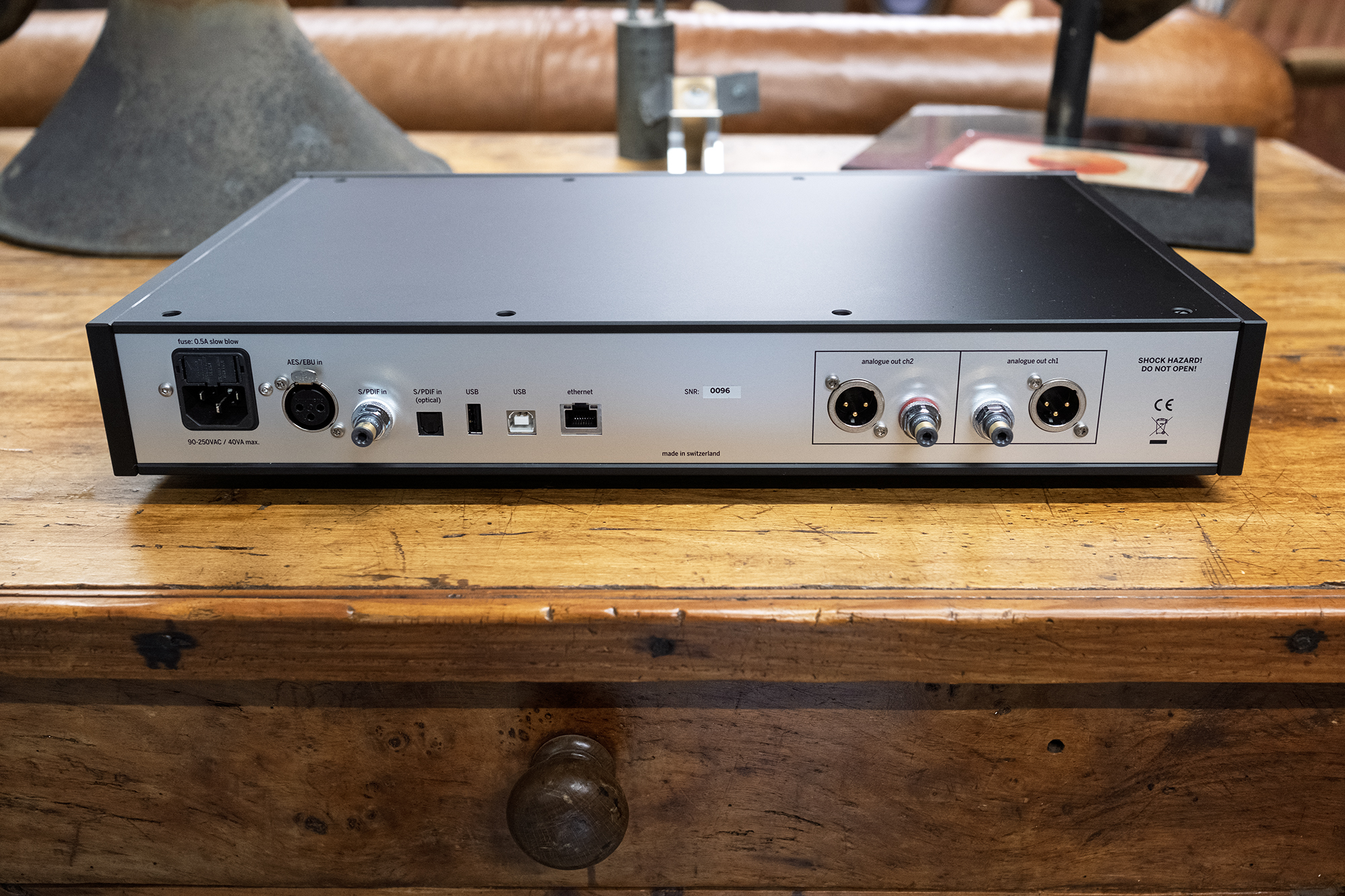
There’s a full suite of inputs including AES/EBU, Coax, Toslink, USB, and Ethernet along with XLR and RCA analog outputs. The Helios wears a dual frame chassis with a stainless steel internal frame and a thick aluminum outer frame that comes in black or silver.
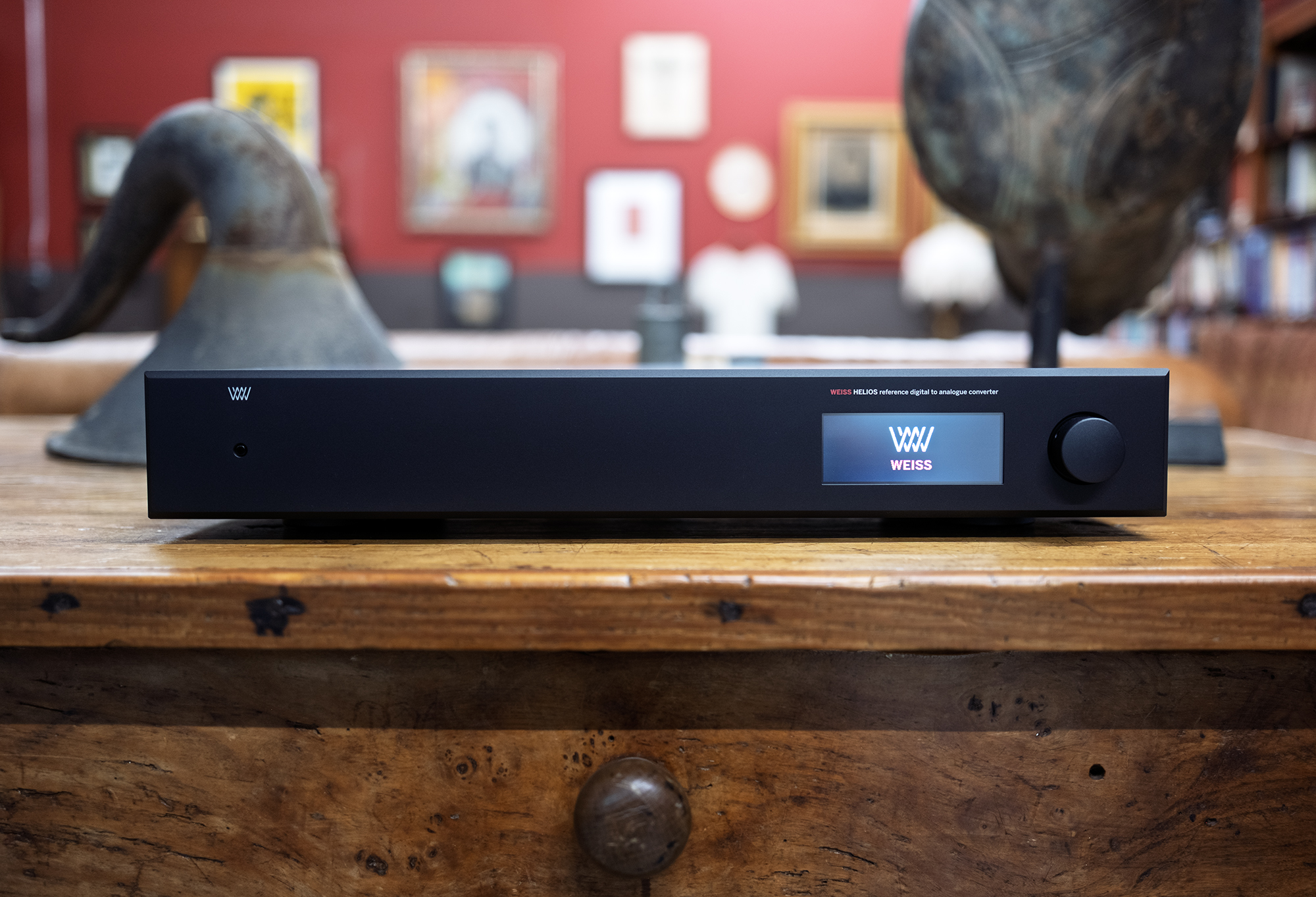
The Helios front panel should be familiar to Weiss 501/502 owners with its LCD touchsreeen and control knob. You can also control the Helios via the web interface which lets you really dig into all of those DSP options. If your curiosity is hungry for more info, I recommend a read of the Helios manual for the full story.
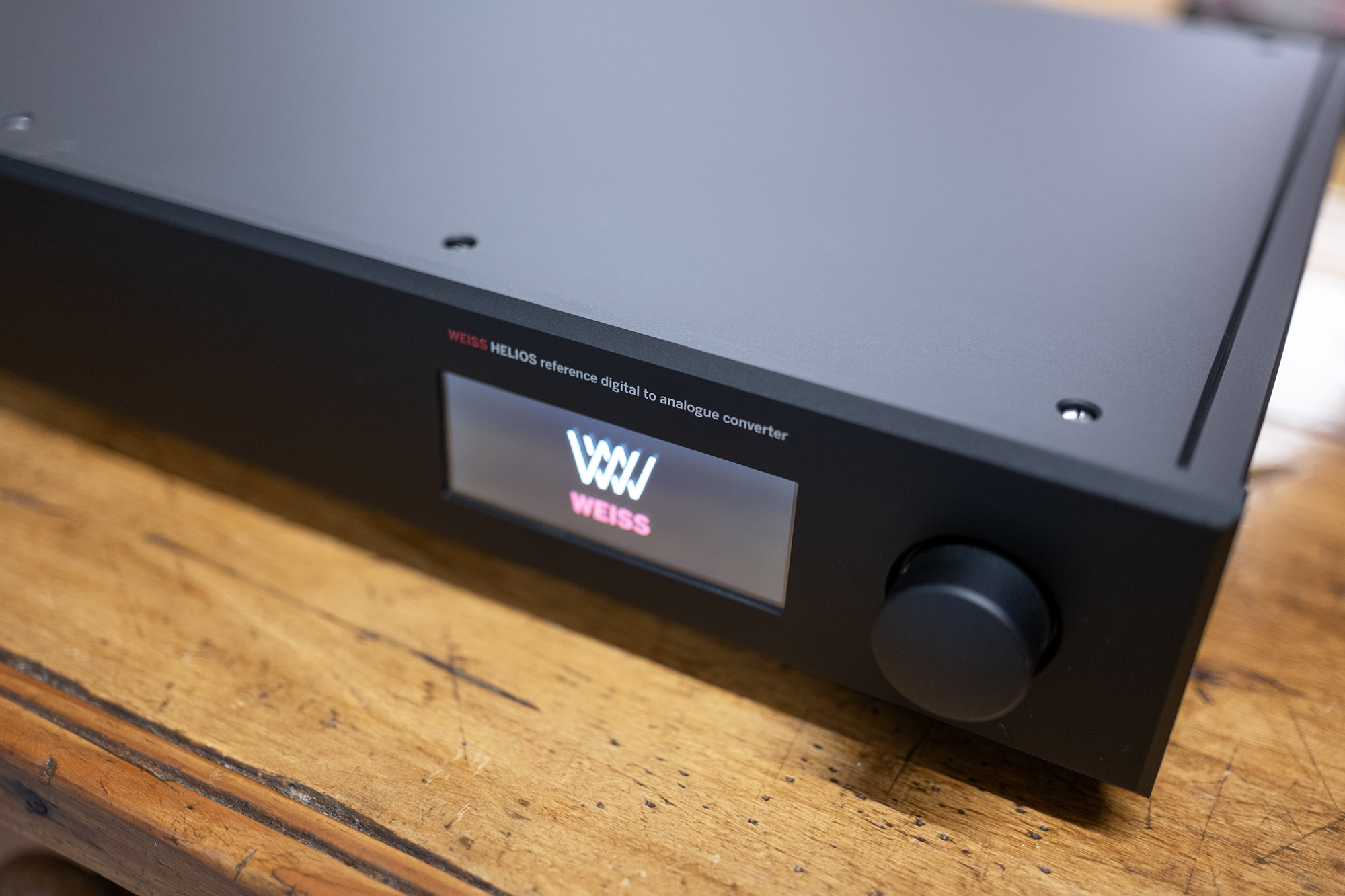
The Helios is ready to make friends in Barn. Stay tuned for much more.
Weiss Engineering Helios DAC
Price: $23,995
Company Website: Weiss Engineering
North American Distributor: Bluebird Music
Specifications
Power:
-
- Mains voltage: 100…120 V or 200…240 V, automatic voltage selection
- Fuse rating: 500 mA slow blow
- Power consumption: 25 VA max.
- Power consumption in standby: 2.2 VA max.
Dimensions (D x W x H): 30 cm x 45 cm x 7.4cm
Weight: 9.4 kg
Size Remote (D x W x H): 2.1 cm x 4.5 cm x 16.6 cm
Available Colours: Silver, Black
Digital Inputs
-
- (1) XLR connector
- (1) RCA connector
- (1) TOSLINK connector (optical)
- (1) USB type B connector
- (1) RJ45 Ethernet connector
All inputs accept professional or consumer standard, i.e. accept AES/EBU or S/PDIF signals.
Sampling frequencies
-
- AES/EBU and S/PDIF inputs: 44.1 kHz, 48 kHz, 88.2 kHz, 96 kHz, 176.4 kHz, 192 kHz
- USB and RJ45 Ethernet inputs:44.1 kHz, 48 kHz, 88.2 kHz, 96 kHz, 176.4 kHz, 192 kHz, 352.8 kHz, 384 kHz, DSD64, DSD128
- Toslink input: 44.1 kHz, 48 kHz, 88.2 kHz, 96 kHz
Input word-length: max. 24 / 32 Bits
Digital Outputs: None
Analog Outputs
-
- (2) XLR connectors (hot on pin 2), short circuit proof output circuitry, DC coupled, low output impedance
- (2) RCA connectors, short circuit proof output circuitry, DC coupled, low output impedance
The output level is selectable via the LCD menu or the web interface; four settings are provided as shown below:
XLR Output
-
- 0dB setting: 16.3 Vrms +26.5 dBu
- -4dB setting: 10.2 Vrms +22.5 dBu
- -8dB setting: 6.5 Vrms +18.5 dB
- -12dB setting: 4.1 Vrms +14.5 dBu
- -16dB setting: 2.6 Vrms +10.5 dBu
- -20dB setting: 1.6 Vrms +6.5 dBu
- -24dB setting: 1.0 Vrms +2.5 dBu
- -28dB setting: 0.65 Vrms -1.5 dBu
As input a 0 dBFS sine wave signal was used
These levels are achieved with a 0.0 dB setting for the level control on the LCD screen.
RCA Output: half the values of XLR (-6 dBu)
As input a 0 dBFS sine wave signal was used
These levels are achieved with a 0.0 dB setting for the level control on the LCD screen.
Synchronization: Via the input signal in case of the AES/EBU and S/PDIF inputs. Via the internal oscillator in the case of USB and Ethernet inputs
D/A Converter chip: Over-sampling multi-bit sigma-delta converter – Four converters per audio channel.
